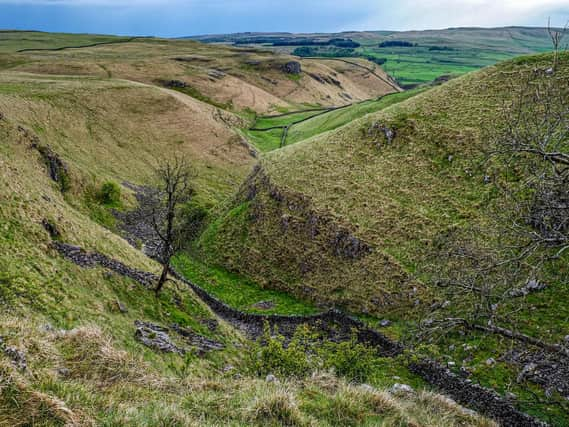Picture Post: Conistone Dib - a stunning example of Yorkshire Dales ‘limestone country’


As the Yorkshire Dales National Park website explains: “The Yorkshire Dales National Park really is limestone country. Limestone is a hard sedimentary rock formed when remains of sea creatures dropped onto the sea floor. It contains fossils like corals and shells.”
Situated above the small village of Conistone in Wharfedale, the dry limestone valley of Conistone Dib has been a cherished walking route for generations.
Advertisement
Hide AdAdvertisement
Hide AdMillions of years ago it would have carried a raging torrent of water, but today it is bone dry.
However, care is required when walking after rain as the rocks in Conistone Dib can become very slippery.
There are also a couple of limestone steps similar to those that form the cataracts at Aysgarth Falls along the route, while at one point the mostly easygoing route narrows to the point that walkers will have to scramble through one at a time over a limestone scar.
For those visiting the area for a walk, it may be worth paying a visit to St Mary’s Church in the village of Conistone, where there is a memorial to the six potholers who died in Britain’s worst caving tragedy at Mossdale Caverns above Conistone in 1967.
Advertisement
Hide AdAdvertisement
Hide AdA memorial plaque is also affixed to the cliff above the entrance to the caverns.
Conistone itself is a deeply historic village, having been mentioned in the Domesday Book. Its name is a mixture of Old English and Old Danish and means King’s farm or settlement.
St Mary’s Church is a Grade II listed building which has its origins in the 11th or 12th Century and was rebuilt in 1846 to retain its 14th Century features.
It was granted listed building status back in 1954.
But even this ancient church is a relative newcomer compared to nearby Conistone Dib, which has millennia of history behind it.
Advertisement
Hide AdAdvertisement
Hide AdTechnical details: Fujifilm X-T1 camera with a 18-55mm lens, exposure of 1/180th of a second at f6, ISO 500. Picture - Tony Johnson.
Support The Yorkshire Post and become a subscriber today. Your subscription will help us to continue to bring quality news to the people of Yorkshire. In return, you'll see fewer ads on site, get free access to our app and receive exclusive members-only offers. Click here to subscribe.